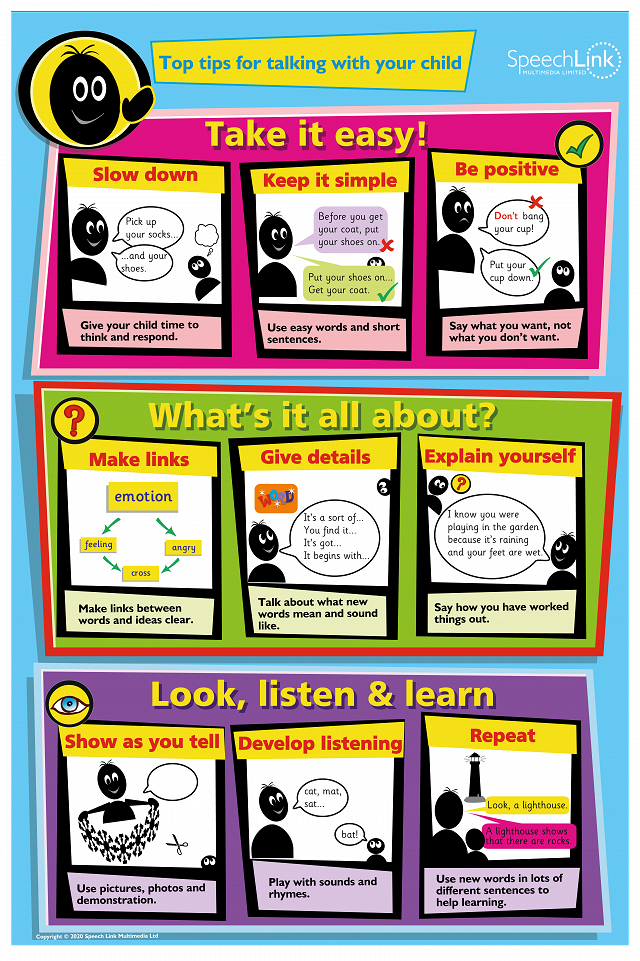Why can difficulty understanding language be hard to spot?

Some children have speech and language difficulties which are very easy to spot. If a child has a speech sound difficulty you will be able to hear that they are having difficulty producing their sounds correctly or using them in the correct places in words. They may be difficult to understand at times because they are unable to say all of their words clearly. Similarly if a child has difficulties with using spoken language (the words and sentences that they are able to say) you may notice that their sentences are very short or they are having difficulty using the correct words in the correct places.
Other difficulties can be trickier to spot. Understanding of language (the ability to understand words, concepts, sentences, instructions) can be very difficult to identify, as it is not possible to observe. Even a speech and language therapist cannot ‘see’ whether a child has understood, just from observing them. If a child is given an instruction and is unable to follow it correctly, for example they pick up the wrong object or do the actions in the wrong order, we can identify that they are having difficulties with their understanding. If they do follow the instruction correctly, however, we cannot always assume that this is because they have understood all of the words that you have used. Children are able to use lots of strategies to mask any difficulties with understanding that they may be having; they could be copying their siblings, following any gestures or non-verbal cues like pointing and eye gaze that you are giving them, or following the usual routine to work out what you might be asking them for.
Children who are struggling to understand language are often noticed for other reasons. This could be because they are finding it difficult to develop their reading and writing skills and falling behind in school. They could also be noticed because of challenging behaviour. They may be told off for not following instructions correctly, and they may start to ‘zone out’ or appear not to listen when people are speaking because they know that they will struggle to understand. Difficulty understanding and communicating successfully can cause huge anxiety and frustration which often results in difficult behaviour. These difficulties are much easier to see and can often indicate a ‘hidden’ problem with language, which is much more difficult to identify.
So, if we aren’t always able to tell if a child is having difficulties understanding language, what can we do to help them at home?
We have created a Top Tips poster of the most important strategies to put in place at home to support the development of your child’s speech and language skills. These are strategies that are easy to put in place quickly, that can make a big difference to your child. Over the next few weeks, we will be posting a series of videos focusing on each top tip and how you can put these in place at home.

You can use the development page of the website to see the typical steps that children take as they develop their speech and language skills. Most children will follow the same steps in learning speech and language, but the age at which they learn them can vary a lot. This means that the ages against each step are a guide only. The best way to use the tables is to identify the skills your child has already mastered and then look to the next step for ideas to help them progress. We have activities for each stage of development that you can use to help your child take their next step.
If you do have concerns about your child’s speech and/or language skills we would strongly encourage you to discuss the concerns with your child’s schools (their class teacher and/or SENCo) as they know your child well and will be able to talk to you about resources and services which are available to you locally.